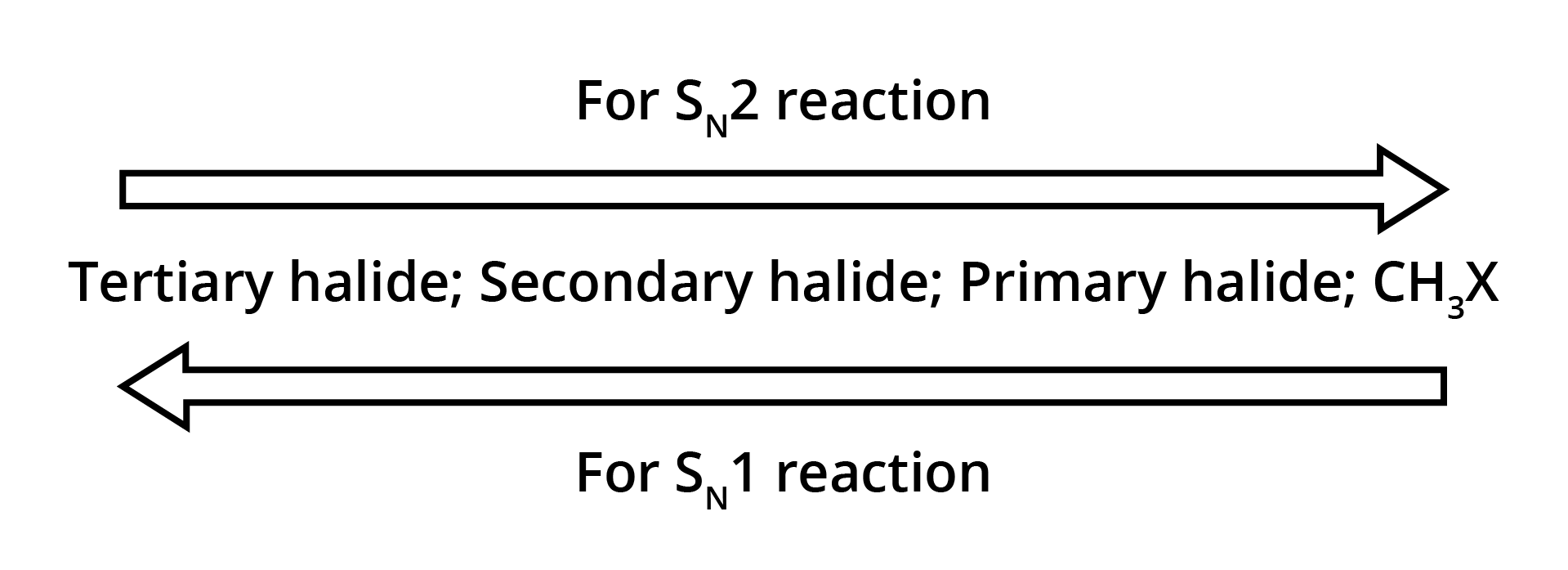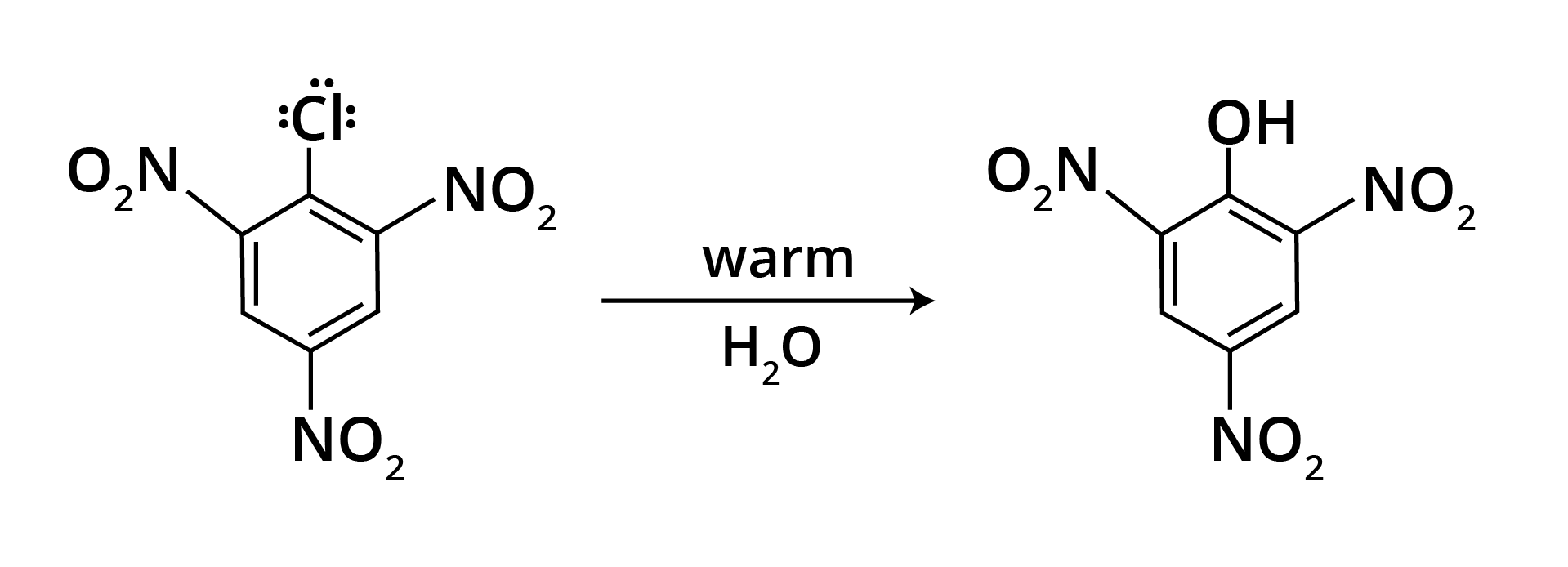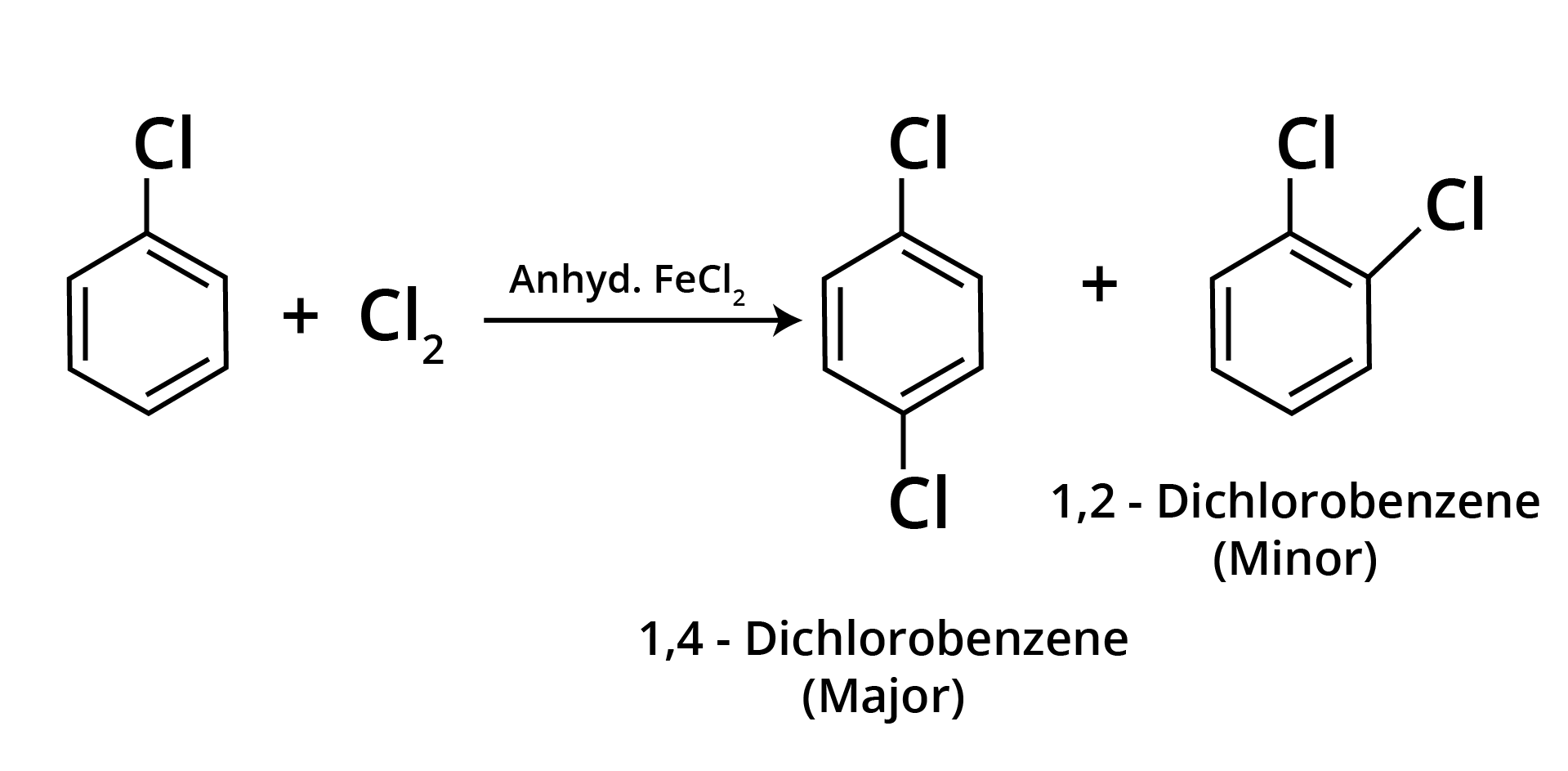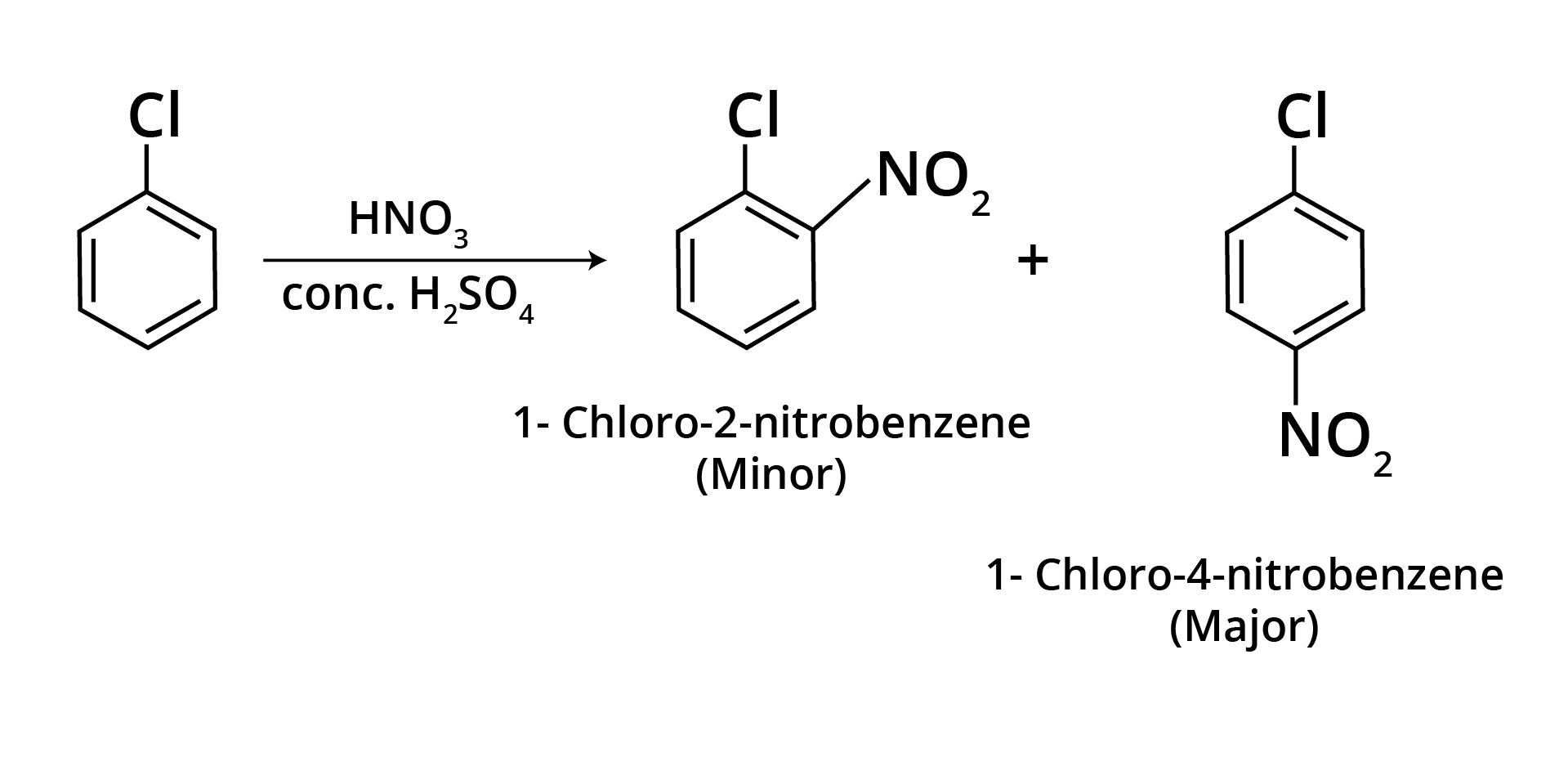




Concepts of Organic Compounds Containing Halogens for JEE Main Chemistry
Organic halogen compounds are organic compounds that have had one or more hydrogen atoms replaced by an equal number of halogen atoms (F, Cl, Br, or I). Halogen atoms can be found in almost any type of organic substance (e.g., alcohols, ketones, and carboxylic acids).
The boiling temperature, melting point, and density of an organic molecule increase when hydrogen is replaced with a halogen atom.
JEE Main Chemistry Chapters 2024
Important Topics of Organic Halogen Compounds Chapter
Alkyl halide
Allyl halide
Benzyl halide
Vinyl halide
Halo arenes
Swarts reaction
Finkelstein reaction
SN1 reaction
SN2 reaction
Important Definition of Organic Compounds Containing Halogens
General Methods of Preparation:
Organic compounds containing halogens, also known as alkyl halides or haloalkanes, are compounds in which one or more hydrogen atoms in hydrocarbons are replaced by halogen atoms (F, Cl, Br, I). These compounds can be prepared through various methods, including:
Halogenation of Alkanes: Alkanes can undergo free radical halogenation in the presence of halogens (
Hydrohalogenation of Alkenes: Alkenes can react with hydrogen halides (HCl, HBr) to form alkyl halides in an addition reaction.
Halogenation of Alcohols: Alcohols can be converted to alkyl halides by reacting them with phosphorus halides (
Halogenation of Hydrocarbons: Aromatic compounds can be halogenated using halogenating agents like
Properties and Reactions:
Alkyl halides have distinct properties and reactivity due to the polar nature of the carbon-halogen (C-X) bond. Some key properties and reactions include:
C-X Bond Polarity: The carbon-halogen bond is polar, with the halogen being more electronegative. This results in partial positive and negative charges on the carbon and halogen atoms, respectively.
Reactivity Towards Nucleophiles: The polar nature of the C-X bond makes alkyl halides susceptible to nucleophilic attacks. Nucleophiles, which are electron-rich species, can attack the carbon atom, leading to substitution reactions.
Reactivity Towards Bases: Alkyl halides can also undergo elimination reactions when treated with strong bases. The base abstracts a proton from the adjacent carbon, resulting in the formation of an alkene.
Reactivity Towards Metals: Alkyl halides can react with metals like sodium (Na) or magnesium (Mg) to produce organometallic compounds, which are important intermediates in organic synthesis.
Nature of C-X bond
The carbon halogen bond of an alkyl halide is polarised because halogen atoms are more electronegative than carbon atoms. The carbon atom has a partial positive charge, whereas the halogen atom has a partial negative charge. Fluorine atoms are the smallest, while iodine atoms are the largest, because the size of halogen atoms rises as we go down the group in the periodic table. As a result, the length of the carbon-halogen bond rises from C—F to C—I.
Reactions of Organic Compounds Containing Halogen
1. Nucleophilic Substitution Reaction
A nucleophile combines with a haloalkane (the substrate) that has a partial positive charge on the carbon atom linked to halogen in this reaction. The halogen atom, also known as the leaving group, undergoes a substitution process and becomes a halide ion. The substitution reaction is known as a nucleophilic substitution reaction because it is triggered by a nucleophile. It is one of the most useful types of alkyl halide organic reactions in which the halogen is linked to sp3 hybridised carbon.
(a) Substitution nucleophilic bimolecular (SN2) reaction
The reaction between CH3Cl and hydroxide ions to produce methanol and chloride ions follows second order kinetics, which means that the rate is determined by the concentrations of both reactants.

The entering nucleophile reacts with the alkyl halide, breaking the carbon halide link while generating a new carbon-OH bond. There is no intermediary generated because these two processes occur simultaneously in a single phase. As a result, the attacked group's carbon atom structure inverts.
Inversion of configuration is the term for this process. The carbon atom is simultaneously bound to the entering nucleophile and the outgoing leaving group in the transition state, which makes such complexes unstable and unable to separate. Because the carbon atom in the transition state is connected to five atoms at the same time, it is unstable.
Because this reaction necessitates the nucleophile approaching the carbon containing the leaving group, bulky substituents on or near the carbon atom have a significant inhibitory effect. Because there are only three tiny hydrogen atoms in methyl halides, they react the fastest in SN2 reactions of all the simple alkyl halides. Because bulky groups obstruct approaching nucleophiles, tertiary halides are the least reactive. As a result, the following is the order of reactivity:
Primary halide > Secondary halide > Tertiary halide.

(b) Substitution reaction SN1
In most cases, SN1 reactions are carried out in polar protic solvents (like water, alcohol, acetic acid, etc.). The reaction of tert-butyl bromide with hydroxide ion produces tert-butyl alcohol and follows first-order kinetics, which means that the rate of reaction is determined by the concentration of only one reactant, tert-butyl bromide. It happens in two stages. The polarised C—Br bond is slowly cleaved in step I, yielding a carbocation and a bromide ion. In step II, the carbocation is attacked by a nucleophile to complete the substitution reaction.

The first step is the slowest and most reversible. It entails the breakdown of the C–Br bond, for which the energy is produced by solvating halide ions with the proton of a protic solvent. Because the reaction rate is determined by the slowest step, the rate is determined solely by the concentration of alkyl halide and not by the concentration of hydroxide ion. Furthermore, the higher the stability of a carbocation, the easier it will be to generate it from an alkyl halide and the faster the process will be. Because of the great stability of 30 carbocations in alkyl halides, 30 alkyl halides undergo SN1 reaction fairly quickly. The sequence of reactivity of alkyl halides towards SN1 and SN2 reactions can be summarised as follows:

2. Halogen Exchange Reaction
Alkyl iodides are frequently made by reacting alkyl chlorides/bromides with sodium iodide in dry acetone. The Finkelstein reaction is the name for this reaction.
R-X + NaI → R-I + NaX
x= Cl, Br
The best way to make alkyl fluorides is to heat an alkyl chloride or bromide in the presence of a metallic fluoride such as AgF, Hg2F2, CoF2, or SbF3. The reaction is termed as the Swarts reaction.
CH3-Br + AgF → CH3-F + AgBr
3. Elimination Reaction
When a haloalkane containing a -hydrogen atom is heated with an alcoholic potassium hydroxide solution, the hydrogen atom from the -carbon atom is removed, and a halogen atom from the -carbon atom is formed. As a result, an alkene is generated as a result of the reaction. Beta hydrogen is eliminated in this reaction, which is known as a beta-elimination reaction in science.
If more than one alkene could be created due to the availability of more than one -hydrogen atom, one alkene is usually synthesised as the primary product.

4. Reaction with Metals
The majority of organic chlorides, bromides, and iodides create carbon-metal bonds when they react with particular metals. Organometallic compounds are a type of compound that falls within this category (Grignard Reagent).

5. Wurtz Reaction
In the dry ether, alkyl halides react with sodium to produce hydrocarbons with double the number of carbon atoms as the halide. The Wurtz reaction is the name for this reaction.
2RX + 2Na → RR + 2NaX
6. Substitution Reaction in Haloarenes
By heating chlorobenzene in an aqueous sodium hydroxide solution at 623K and 300 atmospheres, chlorobenzene can be transformed into phenol. The reactivity of haloarenes is increased by the presence of an electron-withdrawing group (-NO2) at ortho- and para-positions.



7. Electrophilic Substitution Reactions
The electron density grows higher in ortho- and para-positions than in meta-positions due to resonance.

A. Halogenation Reaction

B. Nitration

C. Sulphonation

D. Friedel Craft Alkylation

E. Fridel Craft Acylation

8. Wurtz-Fittig Reaction
When an alkyl halide and an aryl halide are combined with sodium in dry ether, the result is an alkyl arene, which is known as the Wurtz-Fittig reaction.

9. Fittig reaction
When aryl halides are treated with sodium in dry ether, two aryl groups are linked together to form similar compounds. It's known as the Fittig reaction.

Uses, Environmental Effects of Chloroform, Iodoform, Freons, and DDT
In the study of organic compounds containing halogens, it's essential to understand the uses and environmental effects of certain halogenated compounds like chloroform, iodoform, freons, and DDT.
Chloroform (
Uses:
Chloroform has been historically used as an anesthetic in medical and dental procedures.
It was once used in the production of refrigerants but has been largely replaced due to environmental concerns.
Environmental Effects:
Chloroform is classified as a volatile organic compound (VOC), contributing to air pollution.
It can contaminate groundwater when disposed of improperly, posing a risk to aquatic ecosystems.
Iodoform (
Uses:
Iodoform has antiseptic properties and was used in early medical practice.
It's employed in organic synthesis and as a reagent for detecting the presence of methyl ketones.
Environmental Effects:
Iodoform itself is not known to be particularly harmful to the environment, but its production can involve hazardous chemicals.
Freons (Chlorofluorocarbons - CFCs):
Uses:
CFCs, such as CFC-12, were widely used as refrigerants and propellants in aerosol sprays.
They found applications in air conditioning and as solvents in various industries.
Environmental Effects:
CFCs have been recognized for their detrimental impact on the ozone layer in the stratosphere, leading to the formation of the ozone hole. The ozone layer protects Earth from harmful ultraviolet (UV) radiation. The release of CFCs contributes to ozone layer depletion and increased UV exposure.
DDT (Dichlorodiphenyltrichloroethane):
Uses:
DDT was one of the first synthetic insecticides and played a crucial role in controlling disease vectors like mosquitoes, reducing malaria and typhus transmission.
It was also used in agriculture to combat crop-damaging pests.
Environmental Effects:
DDT is highly persistent in the environment and can accumulate in the food chain.
It has been linked to adverse effects on non-target organisms, including birds and aquatic life. The bioaccumulation of DDT can lead to biomagnification, causing ecological imbalances.
DDT is associated with long-term health concerns, including its potential carcinogenicity and endocrine-disrupting properties.
JEE Main Organic Compounds Containing Halogens Solved Examples
1. Which of the following pairs of halogen compounds performs the SN1 reaction first?
(i)

(ii)

Ans:
The rate of reaction for SN1 type of reaction depends upon the stability of carbocation. In this part, tertiary carbocation and secondary carbocation are present. The stability of tertiary carbocation is higher than that of the secondary carbocation. As a result, the SN1 reaction of the tertiary carbocation will be accelerated.
In this part, secondary carbocation (2-chloroheptane) and primary carbocation (chlorohexane) are present. Secondary carbocation is more stable than primary carbocation. Therefore, secondary carbocation (2-chloroheptane) will undergo a faster SN1 reaction.
Key Points to remember: Order of rate of reaction for SN1 reaction is 10> 20> 30.
2. Write the equations for the preparation of 1-iodobutane from
1-butanol
1-chlorobutane
but-1-ene
Ans:



Key points to remember: In saturated haloalkane, iodoalkane can be formed by the ion exchange method while in unsaturated alkane, iodoalkane can be formed by the addition reaction.
Solved Problems of Previous Year Question from the Chapter
1. The major product of the following reaction is:


Ans: The correct answer is option (c).

Trick: This reaction will follow Hoffman's bromamide degradation reaction. The aliphatic diazonium salt is not stable, it gets converted into alcohol.
2. In the following sequence of reactions, the P is:


Ans: The correct answer for this question is the fourth option.

Trick: This will follow the Grignard reagent reaction. Grignard reagent on reacting with an alcohol forms alkane.
3. Given below are two statements: one is labelled as Assertion (A) and the other is labelled as Reason (R).
Assertion (A): Synthesis of ethyl phenyl ether may be achieved by Williamson synthesis.
Reason (R): Reaction of bromobenzene with sodium ethoxide yields ethyl phenyl ether.
In the light of the above statements, choose the most appropriate answer from the options given below:
Both (A) and (R) are correct and (R) is the correct explanation of (A).
(A) is correct but (R) is not correct.
Both (A) and (R) are correct but (R) is NOT the correct explanation of (A).
(A) is not correct but (R) is correct.
Ans: The correct answer is b.

Trick: Resonance with the benzene ring creates a partial double bond in the compound.
Practice Questions
1. In the SN2 reaction with –OH, which chemical in each of the following pairs will react faster?
CH3Br or CH3I
(CH3)3CCl or CH3Cl
Ans:
CH3I
CH3Cl
2. Out of C6H5CH2Cl and C6H5CHClC6H5, which is more easily hydrolysed by aqueous KOH.
Ans: C6H5CH2Cl
JEE Main Chemistry Organic Compounds Containing Halogens Study Materials
Here, you'll find a comprehensive collection of study resources for Organic Compounds Containing Halogens designed to help you excel in your JEE Main preparation. These materials cover various topics, providing you with a range of valuable content to support your studies. Simply click on the links below to access the study materials of Organic Compounds Containing Halogens and enhance your preparation for this challenging exam.
JEE Main Chemistry Study and Practice Materials
Explore an array of resources in the JEE Main Chemistry Study and Practice Materials section. Our practice materials offer a wide variety of questions, comprehensive solutions, and a realistic test experience to elevate your preparation for the JEE Main exam. These tools are indispensable for self-assessment, boosting confidence, and refining problem-solving abilities, guaranteeing your readiness for the test. Explore the links below to enrich your Chemistry preparation.
Conclusion
The study of organic compounds containing halogens is of paramount importance in the world of chemistry. This JEE Main chapter provides a deep insight into the properties, nomenclature, synthesis, and reactivity of these compounds. Understanding their uses, as well as their environmental effects, is critical in promoting responsible chemical practices. This knowledge equips JEE Main students with the tools to comprehend the significance of sustainable chemistry and the potential ecological impacts of halogenated compounds. It is an essential building block for future studies in organic chemistry and environmental science, emphasizing the need for a balanced approach to scientific progress and environmental preservation.
FAQs on Organic Compounds Containing Halogens Chapter - Chemistry JEE Main
1. In the JEE Main examination, how important is the haloalkane chapter?
Nearly 1-2 questions arise in the exam from this chapter covering about 8 marks which makes about 2% of the total marks.
2. What are the main points to remember while tackling problems involving halogen-containing organic compounds?
Students should practise writing the mechanism of the reaction for solving the questions from the JEE Main Chemistry Organic Compounds Containing Halogens.
3. Are previous year's question papers enough for scoring good marks in JEE Main?
NCERT and previous year JEE Main papers are adequate to score good marks (200+) in Main. Solving the previous 10-year IIT-JEE exams gives us a significant edge because 3-4 questions with the same answers are sure to be repeated every year.

















